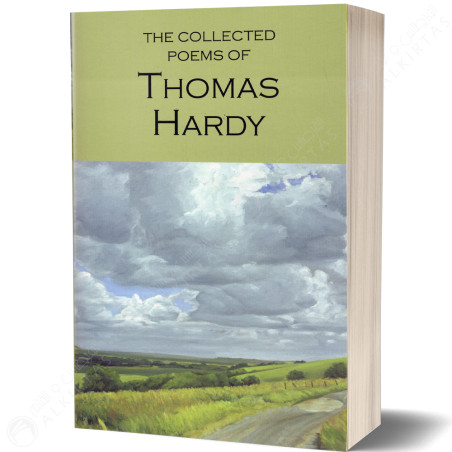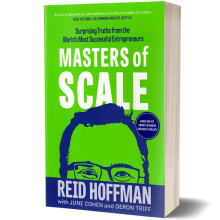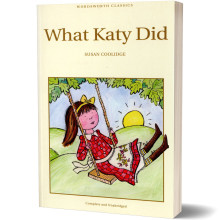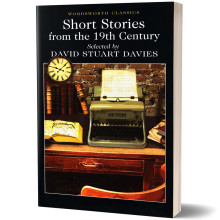With an Introduction, Bibliography and Glossary by Michael Irwin, Professor of English Literature University of Kent at Canterbury.
Thomas Hardy started composing poetry in the heyday of Tennyson and Browning. He was still writing with unimpaired power sixty years later, when Eliot and Yeats were the leading names in the field.
About the Book
Thomas Hardy started composing poetry in the heyday of Tennyson and Browning. He was still writing with unimpaired power sixty years later, when Eliot and Yeats were the leading names in the field. His extraordinary stamina and a consistent individuality of style and vision made him a survivor, immune to literary fashion. At the start of the twenty-first century his reputation stands higher than it ever did, even in his own lifetime.
He is now recognised not only as a great poet, but as one who is widely loved. He speaks with directness, humanity and humour to scholarly or ordinary readers alike.
About the Author
Thomas Hardy
Thomas Hardy (1840-1928) had a writing career which spanned more than fifty years, and he is now considered both a major novelist and poet. His tales of Wessex, a fictional amalgamation of various south-west counties, have a lasting appeal, and many, such as 'The Mayor of Casterbridge' and 'Tess of the d'Urbervilles' have become popular television adaptations.
Thomas Hardy (1840 –1928) was born and lived the greater part of his life near Dorchester, the county town of Dorset. Most of his stories and novels were set in this predominantly rural area, which he re-named Wessex for fictional purposes.
Hardy was the son of a builder and mason and at sixteen he became an apprentice to John Hicks, a Dorchester architect and church restorer. With remarkable discipline, which involved him rising in the early hours of the morning to study, Hardy developed his classical education by studying Greek. In 1862 he moved to London to work as an architect and it was here that he began to write seriously – poetry at first and then fiction. Hardy’s first novel, The Poor Man and the Lady (1867), failed to find a publisher. In despair, he showed it to his mentor and friend, the Victorian poet and novelist, George Meredith, who felt that the narrative was too politically controversial and could damage Hardy’s ability to publish in the future. Taking heed of this advice, Hardy destroyed the manuscript, but used some of the ideas in his later work.
Hardy wrote two new novels in the hope that they would have more commercial appeal, Desperate Remedies (1871) and Under the Greenwood Tree (1872), both of which were published anonymously. It was while working on the latter that he met Emma Gifford, who later would become his wife. In 1873 A Pair of Blue Eyes, a novel drawing on Hardy’s courtship of Emma, was published under his own name. The term ‘cliffhanger’ is considered to have originated with the serialised version of this story (which was published in Tinsley’s Magazine between September 1872 and July 1873) in which Henry Knight, one of the protagonists, is left literally hanging off a cliff.
The publication of his third novel Far from the Madding Crowd (1874) was successful enough for Hardy to give up architectural work and pursue a full time literary career. Over the next twenty-five years Hardy produced ten more novels.
All Hardy’s writing reflected the skilful symmetry and careful planning influenced by his practice as an architect. From an early age Hardy loved listening to stories that were told by his father and other relations, usually around the fireside after the evening meal. These tales would be country anecdotes, stories of dramatic incident, tragedy, comedy and superstition. Later in life, many of his short stories would echo the ideas, themes and even plots that he heard in his youth. For example, while he was still a boy, Hardy knew of an old woman who, in an attempt to cure her of a wasting disease when she was a young girl, had her blood ‘turned’ by coming into contact with a convict’s corpse. He was later to use this incident in his story ‘The Withered Arm’.
Hardy was a great believer in Fate as the ruler of our destiny. He was of the opinion that no matter what our actions in life, we could not change the preordained path laid out for us. This belief was a strong thread throughout all his novels. Fate, combined with dark unfortunate coincidences blighted the lives of his leading characters. His use of this theme was strongly utilised in Tess of the d’Urbervilles (1891), which attracted criticism for its sympathetic portrayal of a ‘fallen woman’ and was initially refused publication. Its subtitle, A Pure Woman: Faithfully Presented, was intended to raise the eyebrows of the Victorian middle classes. Jude the Obscure, published in 1895, met with an even stronger negative response from the Victorian public because of its controversial treatment of sex, religion and marriage. Its apparent attack on the institution of marriage caused further strain on Hardy’s already difficult relationship with his wife. Emma Hardy was concerned that Jude the Obscure would be read as autobiographical. Some booksellers sold the novel in brown paper bags. The controversy caused by Jude determined Hardy to give up writing fiction and he concentrated on poetry for the rest of his life. Hardy died in 1928. His ashes are in the Poets’ Corner of Westminster Abbey and his heart is buried in Stinsford in his beloved Dorset.
- Langue
- Anglaise
- Dimensions
- 125 mm x 198 mm
- Edition
- Wordsworth Editions
- Collection
- Wordsworth Poetry Library
- Auteur
- Thomas Hardy
- Poids
- 615 g
- Nombre de pages
- 960 pages
- Date de Parution
- 05/09/1994
- Série
- Classics
































